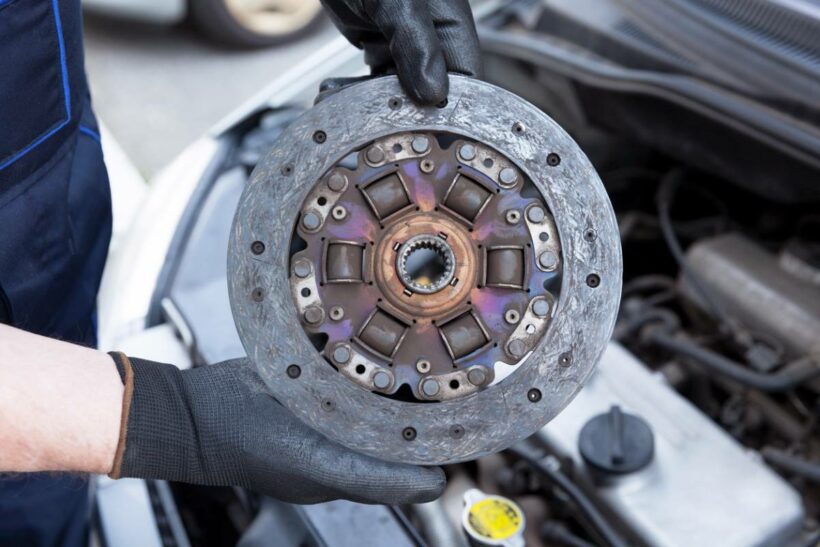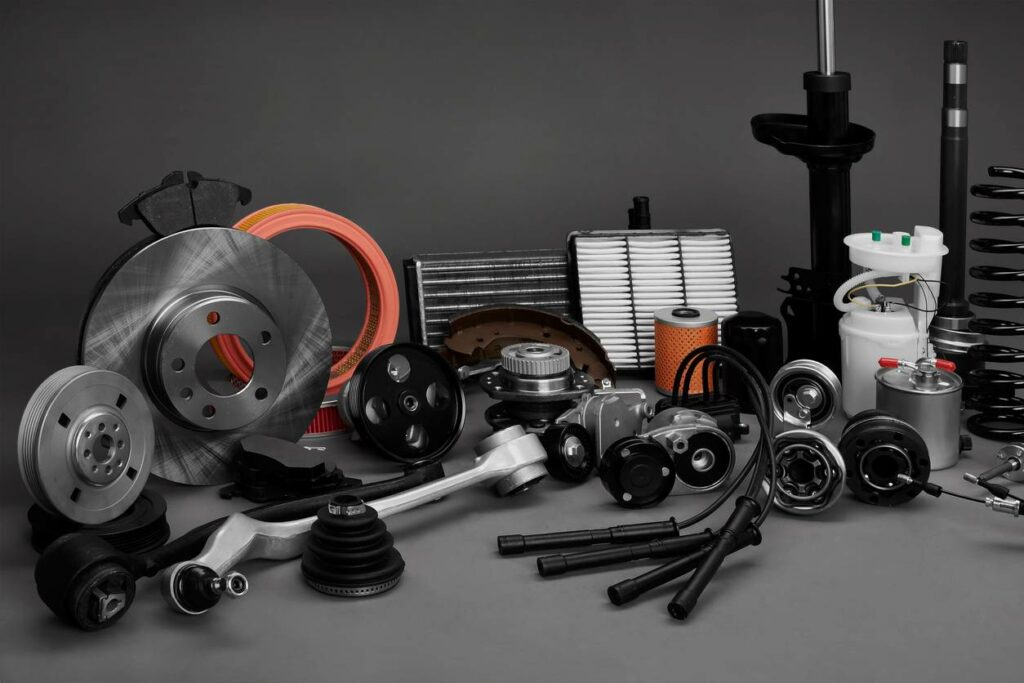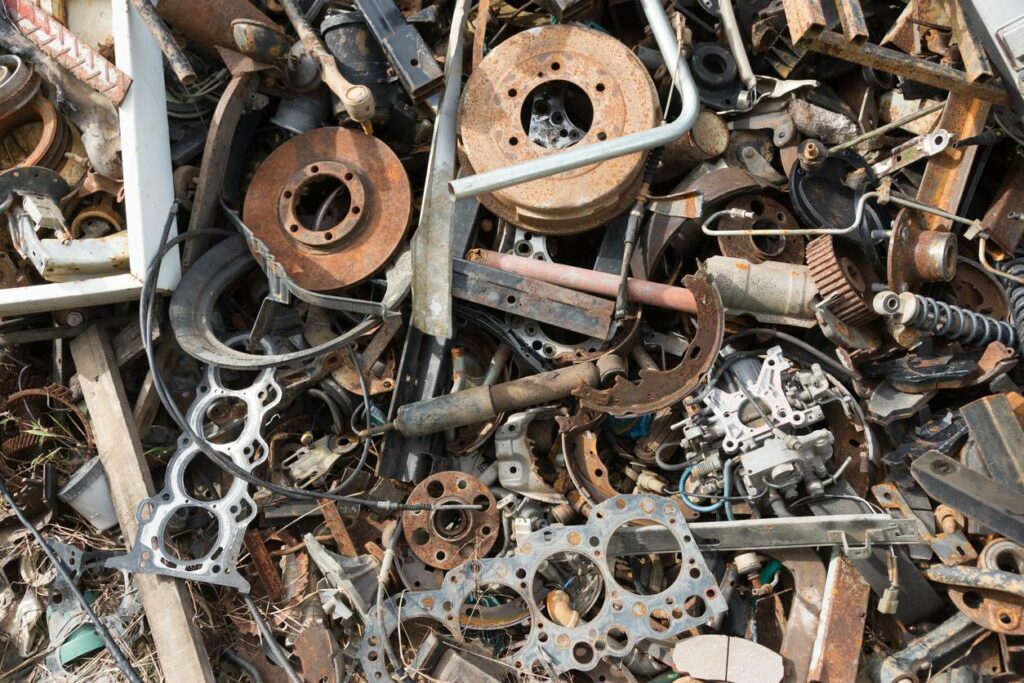At a time when sustainable development has become one of the most important topics of recent decades, it is more than ever necessary to adopt an eco-responsible lifestyle. What if it was possible to bring a much larger and broader dimension to recycling? In recent years, the concept of the circular economy has been extremely popular with many industries, and the automotive world is no exception. Indeed, the use of second-hand auto parts is increasingly popular. How is it possible ? What are the main advantages? Where to get used spare parts ? Discover the answers to these questions through these few lines.
What is the circular economy?
Unlike the linear economy, the circular economy designates a looped production and exchange model, limiting the waste of resources and the production of waste. To put it simply, it consists of using the waste from one sector with a view to reintegrating it into another value chain. It advocates sharing, reuse, repair, renovation and recycling. The objective is to promote the use of existing and available resources. To do this, the products are again inserted into the economic cycle in order to recreate value.
Regarding the circular economy applied to the automotive sector, the products offered as used auto parts from Reparcar are reliable: they are collected from approved and experienced recyclers. This gives you a guarantee of reliability and quality. Making your purchase online on a site specializing in the sale of re-used parts means investing in parts that comply with standards and respect the foundations of the circular economy.
The circular economy is based on a few very distinct pillars.
Sustainable sourcing
This is a much more sustainable method of extraction, that is to say, limiting operating waste and the removal of non-renewable materials.
Ecodesign
This refers to an eco-responsible process taking into account the entire life cycle. Obviously, this kind of initiative is supported by appropriate tools and support.
Industrial and territorial ecology
This pillar illustrates a perfect symbiosis of flow exchanges. It is also the highlighting of the pooling of needs. The principle is simple: optimally optimize the resources made available in a territory through a systemic approach.
The functional economy
The functional economy is the 7th pillar of the circular economy according to ADEME. It favors use over possession and sale of product-related services.
Responsible consumption
The idea is to encourage an economic player to make an eco-responsible choice, that is to say by taking into account the ecological footprint at each stage of the value chain.
The extension of the duration of use
It alludes to going for repair services and buying second-hand. Among other things, this pillar illustrates reuse.
The recycling
It is a question of exploiting again products at the end of their life. It's an increasingly popular concept.
The benefit of switching to a circular economy
The circular economy aims to limit the production of new automotive components thus promoting the ecological transition.
The scarcity of resources
The demand for raw materials continues to increase every year. Yet the scarcity of resources is becoming imminent. Some natural resources are no longer sufficient to meet the needs.
Dependence on other countries
The vast majority of European countries depend on other countries for the supply of certain products and raw materials. The circular economy would then make it possible to be much more independent.
The ecological footprint
The extraction of raw materials, the manufacture and transport of products exerts considerable pressure on the environment. The circular economy would thus allow a more sustainable use of materials and a reduction of the ecological footprint.
What does the law say about the circular economy?
The concept of circular economy made its first appearance in the legislation on energy transition in October 2014. It was a specific objective of the fight against waste, recycling as well as the eco-design of products. A year later, the law established a certain hierarchy of priorities on the exploitation of resources by emphasizing renewable materials and recycling. It was not until 2016 that the implementation of a five-year program was foreseen. It was about the transition to the concept of circular economy. Very quickly, a section dedicated to this obligation was added to the CSR report of companies that comply with it.
In February 2020, the anti-waste legislation for the promotion of the circular economy has finally been promulgated. It is the result of hard and inclusive work. This famous law highlights 5 main axes:
- come out at all disposable,
- invest in consumer information,
- reduce waste as much as possible,
- take action against planned obsolescence,
- produce better.
Various objectives and measures have been formulated in addition to the creation of new sectors and the establishment of better transparency.
Parts from the Circular Economy or CEIP
Alongside the sustainable development goals, we find the establishment of a regulation relating to CEIP. These refer to used parts, also known as used parts.
The principles of this initiative are simple and clear:
- offer the possibility of saving on the invoice by favoring the use of secure second-hand parts. These cost less than new parts. Indeed, the prices of used parts are not set by the car manufacturers,
- integrate part of sustainable development in the automotive sector. This is done through the recycling of end-of-life parts, which can still be repaired and reused.
Nevertheless, it should be noted that the use of CEIP is not yet compulsory. On the other hand, professionals working in the maintenance and repair of vehicles have an obligation to offer consumers the use of PIEC instead of new parts. They are also required to inform their clients about the terms of the decree. In addition, there is a non-exhaustive list of spare parts resulting from the circular economy, in particular removable body parts, non-glued glazing, parts intended for upholstery and upholstery, mechanical and / or electronic parts, optical parts, etc. Obviously, CEIPs can only be used if they are functional and pose no risk to the environment, public health or road safety.
The advantages of buying used auto parts
The second-hand parts market is booming in France. This success can be explained by the many advantages offered by this alternative.
A gesture towards the environment
The circular economy has entered the automotive industry. By choosing used parts, you participate in preservation of the ecosystem. Indeed, auto parts manufacturing processes are responsible for much of the pollution and depletion of resources. Favoring second-hand parts thus makes it possible to reduce the discharge of toxic waste and the drying up of resources.
An economical option
The price is an undeniable advantage of used spare parts. These allow you to achieve savings of up to 70%. So, this is a great option if you are on a tight budget. In addition, investing in used parts allows you to optimize the amortization of your repair bills. In fact, you will benefit from perfectly compatible and functional parts at a reduced price.
A wide choice of auto parts
Used auto parts come in a wide variety. Unlike new parts, they are not hard to find. You will have at your disposal a wide choice of parts, available immediately:
- spare parts for the bodywork: we can cite the bumper, the grille, the doors, the door tie rod, the sill, etc.,
- the upholstery and upholstery parts: we find the dashboard, the seats, the airbag, the rear-view mirror, the rear shelf, the pedals, etc.,
- optical parts: headlights, taillight, optical units, etc.,
- mechanical parts: these are the heating control, the window regulator, etc.,
- electronic parts,
- glazing,
- and other accessories.
Among the most sought-after parts are shocks, brake discs, front and rear lights, brake pads, oil filters, valve lifters, cups, spark plugs, clutch kits, mirrors, gearboxes, etc.
Automotive: where to find used parts?
It is possible to quickly and easily find re-used parts on the web. By browsing a dedicated site, you will find a wide choice of used parts, from all brands. The catalog includes all kinds of items:
- lighthouses: these are lighting and signaling devices essential for your safety,
- mirrors: they are one of the most popular parts. Yours may have suffered a shock and you need to replace it,
- the engine: these sites also offer different types of engines to replace a defective model,
- bodywork and equipment: you will also find on these sites everything you need to repair the bodywork as well as various essential accessories.
The products offered are significantly cheaper than new parts. Moreover, as we have already mentioned, you can save up to over 70%.
The online purchase of used car parts: an advantageous solution
This option acts doubly on the protection of the environment. In addition to the savings made, shopping online is one of the most popular eco-responsible actions in recent years.
An overview of all the parts
By purchasing online, you will be able to have an overview of all the rooms, without having to move. Indeed, you will have access to the online catalog as well as to all the characteristics of each spare part. You will be able to search for the parts yourself, thanks to the headings classified by category.
A practical, quick and easy solution
Buying auto spare parts has never been easier, thanks to online platforms. You just need to select the parts you need and add them to your shopping cart. Used spare parts are available immediately in stock. You don't have to order weeks in advance to get the products you need. In addition, specialized sites generally offer a fast delivery service. Your orders will reach you within 48 hours to 72 hours.
How to choose used spare parts?
In general, used spare parts are available at the scrapyard, online shopping sites, etc. In addition, there are certain points to be taken into account in order not to be mistaken.
Find out about the origin of auto parts
Before rushing to buy it is important to obtain a minimum of information on the origin of the parts in question. Make sure parts have been thoroughly serviced before they go on sale. Some suppliers even offer guarantees on their used parts. Be sure to check the characteristics, and especially the condition of the parts in question.
Choose a trusted supplier
It is also essential to obtain used parts from a trusted supplier. Build on the reputation and notoriety of it. A true professional will be able to advise you on the parts best suited to your vehicle and will be completely transparent about information about its products.
Analyze the quality / price ratio
It is always important to find the right compromise between quality and price. Indeed, it is not advisable to rush to cheap parts, but which do not meet the required requirements. Either way, you won't have a hard time finding high quality spare parts at affordable rates.




